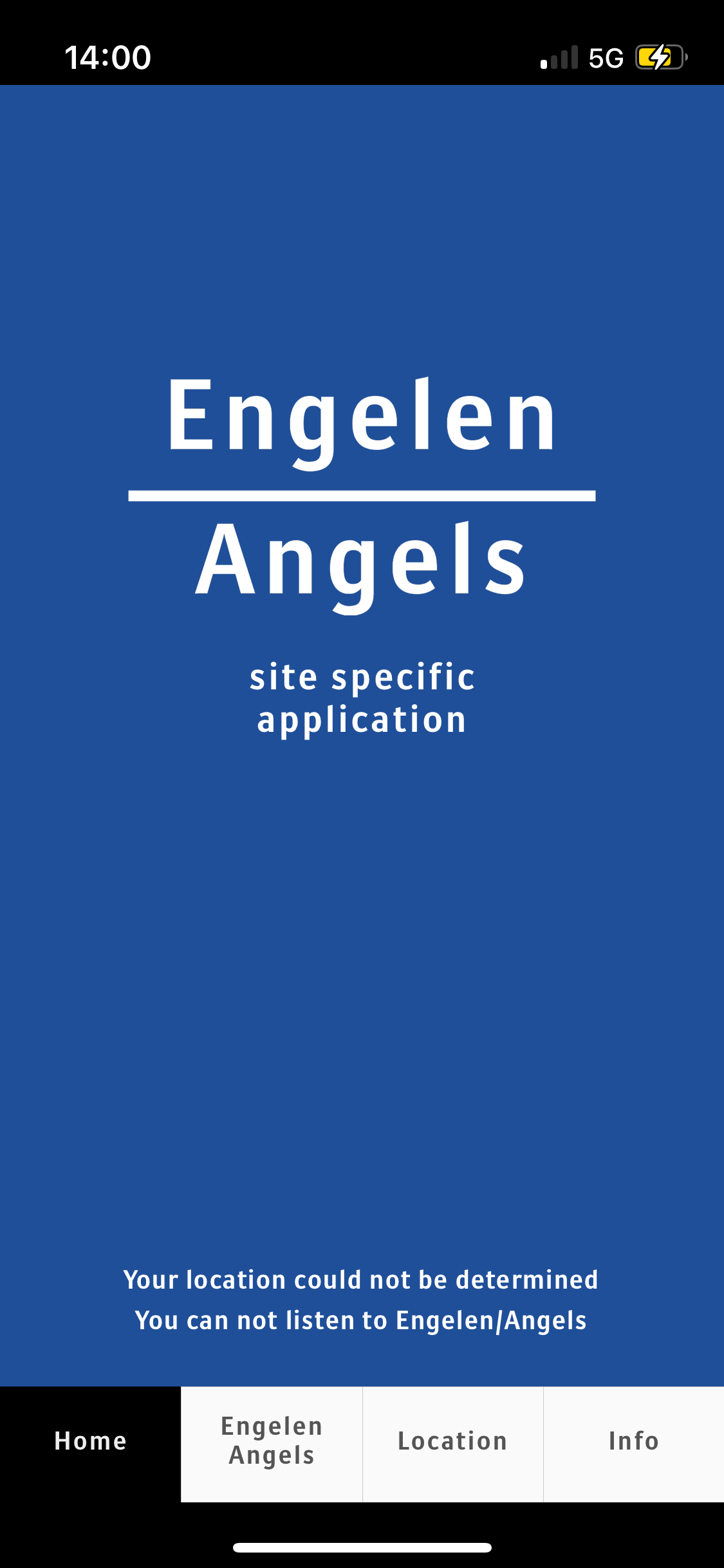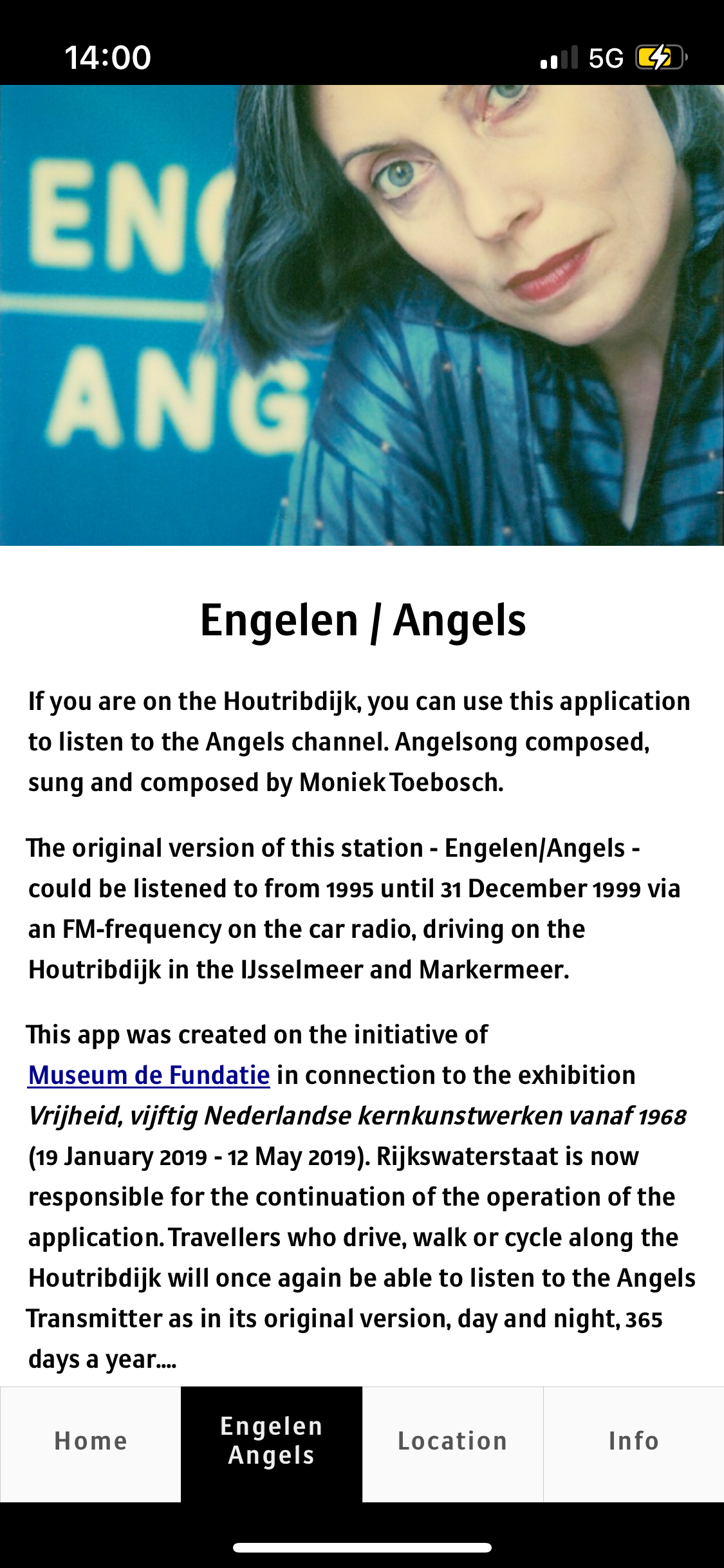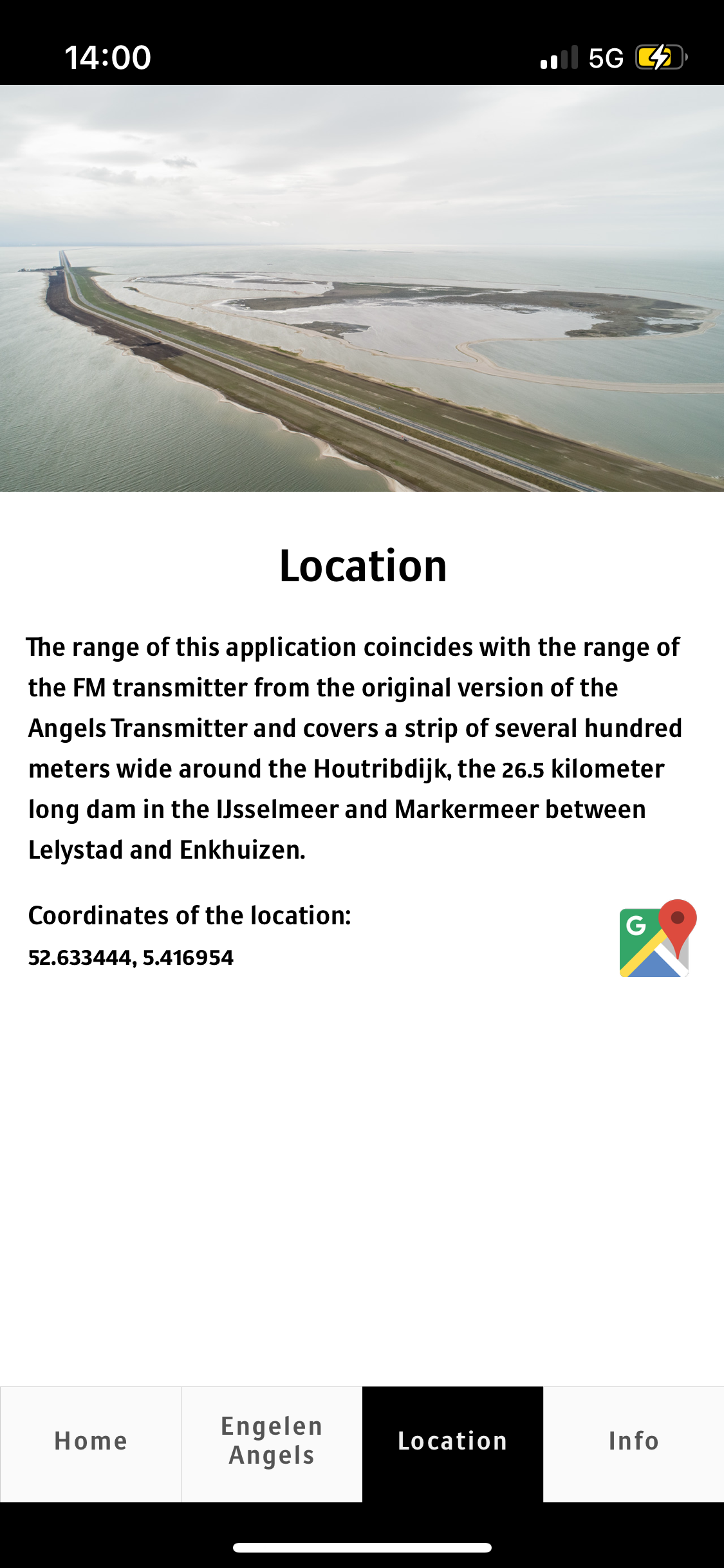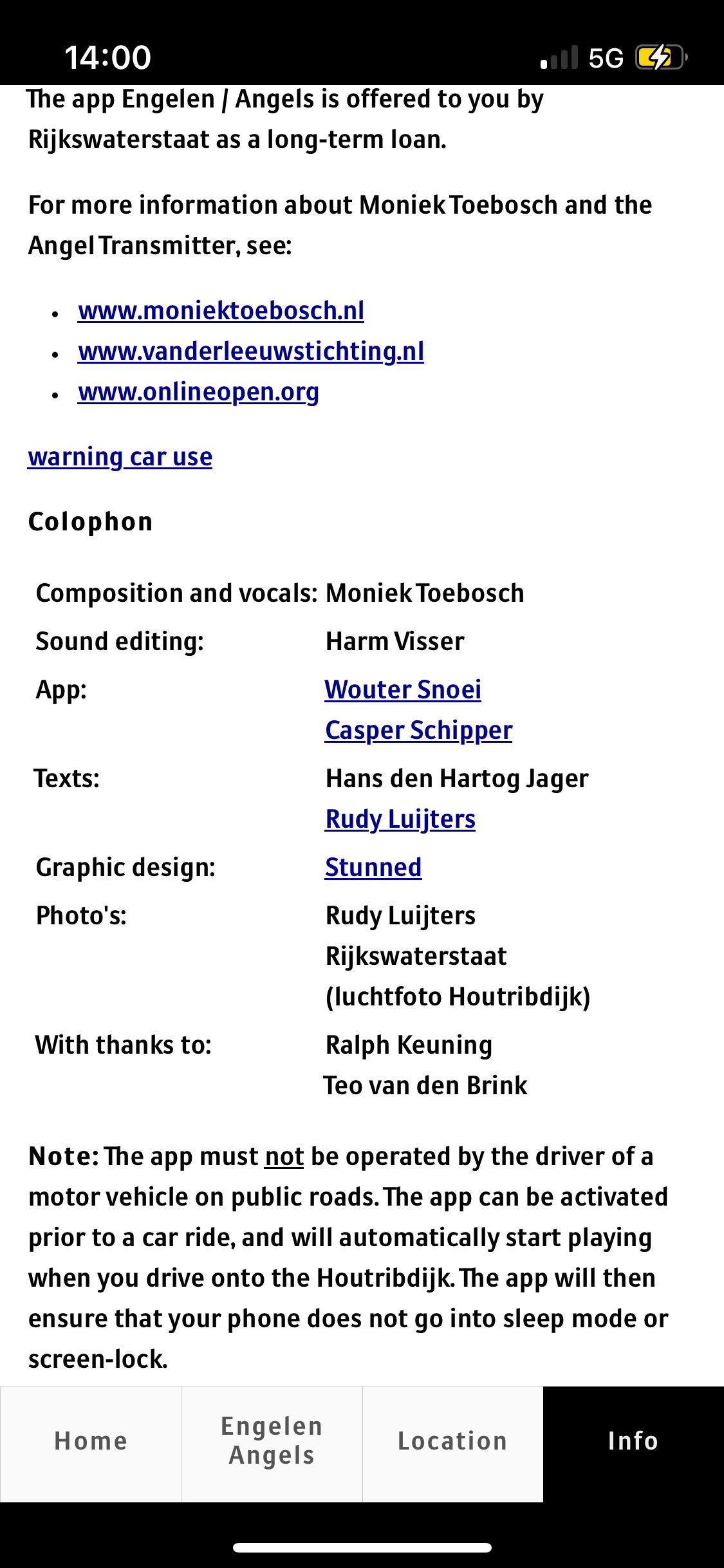Moniek Toebosch, Engelen/Angels, 1994 - Flevoland, Netherlands (July, 2024)
Background
This is the first post of five Land Art Flevoland sites that we visited in July, 2024. (I’ll repeat the next two paragraphs for all five posts)
Flevoland is the twelfth and newest province of the Netherlands. It exists in the Zuiderzee / Lake IJssel (a shallow bay connected to the North Sea, which they somehow converted from a body of saltwater into fresh water now), and almost the entirety of the province was added in mainly two separate land reclamation projects or polders. The first was in 1942 and the larger second started in 1955 and was completed in 1968. Flevopolder (as this new island was called) is the world’s largest artificial island at around 1,500 square kilometers.
Land Art was in its hayday of the 1960s and 1970s. In conjunction with the opening of this new land, the planners decided to add some land art pieces to become a part of Flevoland. Thematically it makes a ton of sense. Both creating Land Art and the empoldering process share a strong connection to the Earth and transformation of the landscape. You could even say that reclaiming this island was an even grander land art project. They’ve added 10 land art pieces now, with the most recent being completed in 2018.
Engelen/Angels by Dutch artist, Moniek Toebosch, was added third in 1994. And by added, I mean, invisibly added (albeit for a road sign that apparently once existed and was taken down in 2000), as this land art is audio. Engelen/Angels is a sound installation that can be heard only on a 26 km land bridge / dyke / dam called the Houtribdijk. Originally it was broadcast on a radio frequency on 98.0 FM (24 hours a day), but that ended in 2000, and it was revived in 2020, now available via an app.
Moniek is the daughter of a composer and many of her works actively involve sound. During the roughly 20 minute drive you listen to a soundscape composed in collaboration between Moniek and Harm Visser. The “music” is abstract harmonized vocals that feel at home in a arthouse film depicting angels communicating amongst each other in a vast flat landscape. Every so often in different languages the words for Hope and Love are spoken throughout. I couldn’t find an exact length of the piece, but suffice to say it’s much longer than 20 minutes, as we never heard it break or could identify that it had looped.
While the physical landscape of the manmade sea around you is a key component of the experience, for it to be audible only in a specific location made it a unique experience. In the privacy of your own vehicle you zip along this land bridge, just above the water being serenaded by celestial noises that you’ll only hear there.
Travel
The Engelen / Angels app only works along the dike between Enkhuizen and Lelystad. It’s about a 20 minute drive across without traffic. There are drawbridges that can create some backups.
Engelen/Angels was our first stop on our Land Art Flevoland road trip (five stops in Flevoland)
You’ll need your own car to visit. Though I’m sure there are buses that would take you across. There are no tolls on this drive. Amsterdam is pretty close, so all of this can be done as a day trip from the capital.
It is the farthest of the Land Art Flevoland pieces, though I suppose if you just pulled over in Lelystad near the dike, you could just listen to it without actually driving over the bridge, but you wouldn’t be experiencing the piece fully, so I don’t suggest you do that.
Download the app here (Apple & Google). You’ll need to turn on location services for it to work as well.
Experience
We did a 140km route around Flevoland to see five of the land art pieces. We rented a car in Amsterdam, and drove up the west coast of the Markemeer, headed to Enkhuizen. We figured we would drive across the dike once, and didn’t want to go back and forth. Arguably, we could have driven west across it from Lelystad, U-turned and returned, but I often prefer loops rather than there and backs. That said, in hindsight, I probably would suggest doing the there and back. It would save time, and it’s a prettier drive than just driving north out of Amsterdam.
My main advice is to download and set up the app before you arrive. There’s not really an ideal place to pull over and set it up, and we spent a good few minutes on the dike just trying to get the app loaded, hooked up to our car’s Bluetooth, and playing for our drive. My phone was connected to the car, but didn’t have service, so we had to do a swap whilst driving and it was a whole hassle (better experienced over the car’s sound system than a phone).
Below is the app, but these screenshots were taken back stateside, so it looks different when it’s live.
There are no signs or indicators that Engelen/Angels is there. So just keep an eye on the app, and when it turns on just hit play and listen. Because I was driving, I don’t have any pictures of said drive (because I’m a relatively responsible and safe driver), but I assure you it’s a beautiful crossing.
Driving across along the dike for 20ish minutes, just a few meters above sea level, with wide expanses of water on either side of you, while you listened to a choral soundscape was quite meditative. Unfortunately, you don’t want to get too wrapped up in it, as you’re still operating a motor vehicle. And we were quite disappointed there wasn’t any place to really pull over and just sit and enjoy the scenery. Couple of breakdown lanes were available, but still directly on the main road, and there was little notification or privacy from the main road.
Engelen/Angels is a piece of art through a medium you don’t get to experience often. It’s ephemeral because you can’t see it or touch it. It plays with the impermanence of land art, and plays on it in a new way. It has a vastly different type of endurance over the years than the monuments and sculptures made of steel and stone. It has been digitized and revived once already, but how long will this format be supported and last? Will it transfer again to whatever comes next?
We often use our phones and apps as a means of escape, but the Angel Transmitter app forces the reverse. When tuning into Toebosch’s music, you are actively choosing to be present. To drive the dike, to stare off into the inland seas the Dutch have created.
We’re actually quite surprised it hasn’t gone viral, as a lot of social media seeks out unique experiential activities. Especially things that are obscure and prove that you’re worldly and have wealth / privilege. Given the anti-tourism push in so many parts of the world, and even across the bay in Amsterdam, it would be natural that the Angel Transmitter gain more popularity in this social media age.
We were there in July, 2024. The Netherlands were much colder and rainier than we expected. The weather was volatile and all over the place. This roadtrip was on a Monday and there was rarely any traffic, barring waiting for some ships to cross the aforementioned drawbridges. There are no hour restrictions as far as I could tell.
We had leftovers from Amsterdam that we ate, but otherwise, we just stayed on the road, and grabbed caffeinated beverages for the drive, so I have no restaurant recommendations.
Summary
As part of a broader day trip to Land Art Flevoland from Amsterdam, I highly recommend that Engelen/Angels makes the cut. Get a window seat, be quiet, and soak up the nature and whispers of angels.
Podcast / Interview
This is a link to Land Art Flevoland’s podcast / interview about Engelen/Angels. It is unfortunately in Dutch only. But I did put it through a transcriber (notta) and translator (Google). I apologize to the original content creators, I had to edit and bridge some gaps, but hey, I don’t speak Dutch, and I just wanted to share their content with more people. Hopefully they don’t mind. Below is the badly transcribed, translated to English, and edited interview transcript.
Luuk Heezen: Between Enkhuizen and Lelystad runs the Houtribdijk, a 29-kilometer dike [land bridge] with a view of the water on both sides. You can drive over it without knowing that there is a work of art to experience, Engelen/Angels, also called the Engelenzender [Angel Transmitter], by Moniek Toebosch. Between 1994 and 2000 you could tune in to 98.0 FM on a radio in your car. Then you heard Moniek's singing, sometimes fragile and sometimes multiplied, so it often sounds like a choir, a choir of angels. This Angel Transmitter could only be received near the dike, until December 31st, 1999. After that the Angels were taken off the air for a while, but they could be heard again in 2019 via an app. Due to it being revisited as part of the exhibition called Freedom; 50 core Dutch artworks from 1968, selected by art critic Hans den Hartog Jager for the Museum de Fundatie in Zwolle. The app was then taken over by Rijkswaterstaat [a government agency regarding public works and water management] and later the province of Flevoland. Now it is free for everyone to download. Turn on the app and as soon as your GPS indicates that you are near the Houtribdijk, the Angels will start singing to you again.
I talked about this special work with art historian Brigitte van der Sande. Who followed Moniek’s work until she died in 2012. It is actually an impossible question, but I am going to ask it anyway. What kind of artist was Moniek Toebosch?
Brigitte van der Sande: That is indeed an impossible question. She was about the most versatile artist I have ever met. It really did not matter which discipline was used, it really depended on the project. She is simply a real freethinker and a free maker, in that respect.
Luuk: What has she done?
Brigitte: Performances, photography, theater, and music. She was of course the director of DASArts [Amsterdam University program] for a while, a number of years. I first learned of her through television programs. She could actually control any situation and then also improvise, but also with her deep knowledge of her own perspective. At the same time she was also already busy pushing all the boundaries of the forms and media that she used.
Luuk: Do you have an example of that?
Brigitte: For example, on television, she broadcasted live four times at the Holland festival, in the 80s. There's a very famous example, one year there was a huge, big, noisy concert by… I believe, Glenn Branker. The classical music orchestra, comprised of police officers, found it so terrible that some of the orchestra walked right out. It's live, which is of course terrible, but she knew how to recover right away and sang a beautiful aria there.
Luuk: Without the orchestra then?
Brigitte: Well, with a few orchestra members who had stuck around, who also thought it was funny. And just that you can do that without completely collapsing, I think that's really great. And it also produces something very beautiful and moving.
Luuk: Yes, so disruptive, but not pointless in the end. [?]
Brigitte: No, that was it indeed. I was just really curious about what happens when you do something like that live with all kinds of music together. Usually those are separate genres of course. That was then and even more so now I believe, but they were very good at breaking it down.
Luuk: And what about her visual artwork? Because that's what you know her from, tell me what she was like as a visual artist.
Brigitte: Very constructive, but at the same time I found it visually appealing. Once I was in Fort Asperen [a historical fort that is now a park / event space / museum?] at the time. I was joking [unclear] and I asked her, would you like to design heaven, and she was very keen to do so. What you normally expect from a visual artist is that he or she will place objects in a space, but she absolutely did not do that. She simply had the entire space, the top floor of Fort Asperen, completely washed with green soap and painted completely white. So you had a completely empty space with three white benches per room or hall. They were the only things in the room with white light, you sat there, there was nothing to hear either, except for the natural sounds of the environment, so heaven was inside yourself then. A lot of people got very nervous about that, but if you could handle it, and went up another set of stairs where you could hear a kind of crackling electrical sound, then you ended up on the roof of Fort Asperen and there was a beautiful reception with tables where there was water, bread, grapes, and olives and then you could just stay.
Luuk: Yes, so you were first forced to be confined with yourself, then you could emerge.
Brigitte: Heaven is unimaginable in many beliefs. But she makes a whole conceptual space of it, so that you really come back and look into yourself.
Luuk: Yes, and then you have the Angels here, also somewhat related to heaven. Are those common themes in her work?
Brigitte: I often think, the opportunity creates the work for her. I asked her to do the [unclear] after the heaven project. This work was the first iteration of Engelen/Angels. I had a car without a radio at the time, so I had to buy one.
Luuk: [unclear]
Brigitte: Yes, especially for this work, because I really want to hear that. Then I took my then still small daughter in the back of the car. I thought it would be nice for her too. So she can hear Angels for the first time in her life. As far as I know, it was just a request from a foundation to design a shelter or something with the rest up to the artist. For her, the car was the shelter. And I feel very related to that, because I always love being in a car. I really feel like a kind of free space without being distracted by others. And when I did indeed drive up the dike, I parked somewhere and my daughter just slept in the back, like a toddler. And then I looked at the beautiful sea with light and listened to the Angels.
Luuk: What was that experience like, the first time you heard the Angels?
Brigitte: Well, for me it's special, because I grew up completely non-religious or even anti-religious. My father was an ex-Catholic and they had done everything with religion. So that's why I was very intrigued by everything that was religious as a child. I registered myself with a church and things like that. So for me it was a kind of magical world as a child. And soon I got to know people from my own family, who were all very religious. Then I immediately understood that it was actually a bit of a washout [?]. And by my adolescent years, I was not religious anymore. But still had a curiosity about things that you cannot see. As art historians we always continue to honor that of course. Angels are often depicted and certainly in the Renaissance. But to hear it, that is something very special. So I think it's a very spiritual experience.
Luuk: We hear her own voice, right?
Brigitte: Yes, her own voices. With her it is always plural, because she has so many different kinds of voices. It is not like she is a soprano and then she sings one kind of song, but she can also sing very ugly. She can put on all the different voices.
Luuk: She has done that often, it is always about stretching the medium in which she is working. Here, too of course, you are given the assignment to make a bus shelter and you end up on a station, an FM station, so things are completely set to her hand.
Brigitte: Yes, I find this work very interesting, also with another work that developed at the same time, Le Doulœur Contemporain [unclear ?]. It is also a work with voices and you set them in motion when you walked into her installation of all loudspeakers. [unclear transition] In the early nineties or the Berlin wall fell. There were the Bosnian wars that were really so close to Europe for the first time since the Second World War. You had Rwanda, there were really terrible things going on. And I think that is the beautiful thing, because she has the Angel Transmitter that is very spiritual and very hopeful. Because she also speaks words, such as hope and love and perhaps even more. I don't remember that anymore. But Le Doulœur [?] was just a counterpart. There were all those [tragedies?], mainly women, but also men, who experienced horrible things. That could have been war, but I happened to read that today. Because I wanted to dig up something more after all those decades. But that it was also about sports, for example, that were very airy themselves, that they had lost. So it's not just about the world's suffering, but it's also about the personal clothing of people. Here you are also thrown back on yourself. And there too, what is the pain there and what is the hope here. So that's very beautiful, I think.
Luuk: Yes, each group on its own because you are in your own shaped space, where you can cry, where you can laugh. You are sung to directly. You said it at the beginning, it is a conceptual work, but visually often very good too. Yes. This is an audio work, but at the same time there is an image of the environment.
Brigitte: She really makes sublime use of the environment. Let's go over it. Well, this vast landscape, that's just so beautiful in itself. And she adds an element to it, which gives you a kind of heightened experience of this environment as well. So the entire environment is included in her work. They are not separate things, they have become one entity because of that.
Luuk: It is beautifully wide, indeed. You can also imagine that if Angel’s voices are heard somewhere in the Netherlands, it is here. It also reminds me a bit of the siren and the story from antiquity.
Brigitte: Yes, fortunately we are not on the rocks.
Luuk: They did indeed lure ships to the rocks to let them sink. Those kinds of concepts play a role, so she also makes a kind of timeless gesture here.
Brigitte: Yes, references to ancient cultures and ancient history and myths. So in that sense she takes a lot with the person who experiences this of course. That is also nicer about this work, that it is so free to have your own conclusions or thoughts or associations about it.
Luuk: I read in the article you wrote about her, that she thought that art in public space should not be pushed in your face, that it should be subtle.
Brigitte: I think that's really beautiful, because certainly you think a lot of artists should be able to do everything, everywhere. And Moniek was one of the first for me to be there. Yes, there are limits, because everything you do in public space... nobody asks for it. And you can really shock people, that's very easy. Which alienates people from art, but also from a sense of community, people no longer feel comfortable. I also know that she actually just thought that not everything should always be there. You shouldn't always present humanity with the same works.
Luuk: Yes, exactly. It's also a bit in that spirit, because you have to make quite an effort to get here.
Brigitte: Yes, rent or have a car and buy a radio.
Luuk: Yes, or now download an app and you can only listen when you're nearby. The app signals that you're nearby and then it starts. You have to work for it.
Brigitte: Yes, but I think that's a good thing, because it seems like everyone thinks that art should be very easily accessible, but I also agreed with her. Everything that is worth it, you have to make an effort for. Otherwise you just get a kind of fast food artwork, which is very easy to swallow, but then you lose it. The Angel Transmitter really resonated with me for a long time and I think that it is also very nice to experience that and to really make an effort for it. It also just makes you think of things that you cannot see, that they can still be there, which is very normal in a lot of cultures, but less so in the West. There are those are things that you do not see, but that are just there. And artists are very capable of showing us that these things continue while you’re in your own daily activities.
Luuk: Thank you.
Sources
Land Art Flevoland. “Engelen (‘Angels’), FM 98.0 (1994).” Accessed October 28, 2024. https://www.landartflevoland.nl/en/land-art/engelen-angels-fm-98.0-1994/.
Land Art Lives. “Lokaal Netwerk Flevolab Tour: Land Art Lives 2024 Program.” Accessed October 28, 2024. https://landartlives.nl/en/program-land-art-lives-2024/lokaal-netwerk-flevolab-tour/.
Veersma, Nicole. “Nonprofit Art Initiatives and Engagement in the Flevoland Region.” University of Amsterdam, accessed October 28, 2024. https://pure.uva.nl/ws/files/152890460/nkjo-article-p164_8.pdf.
Instagram. “Land Art Flevoland: Engelen (‘Angels’) Highlight Reel.” Instagram video, 2022. https://www.instagram.com/reel/Cldm0rgo4Sk/?utm_source=ig_web_button_share_sheet.








